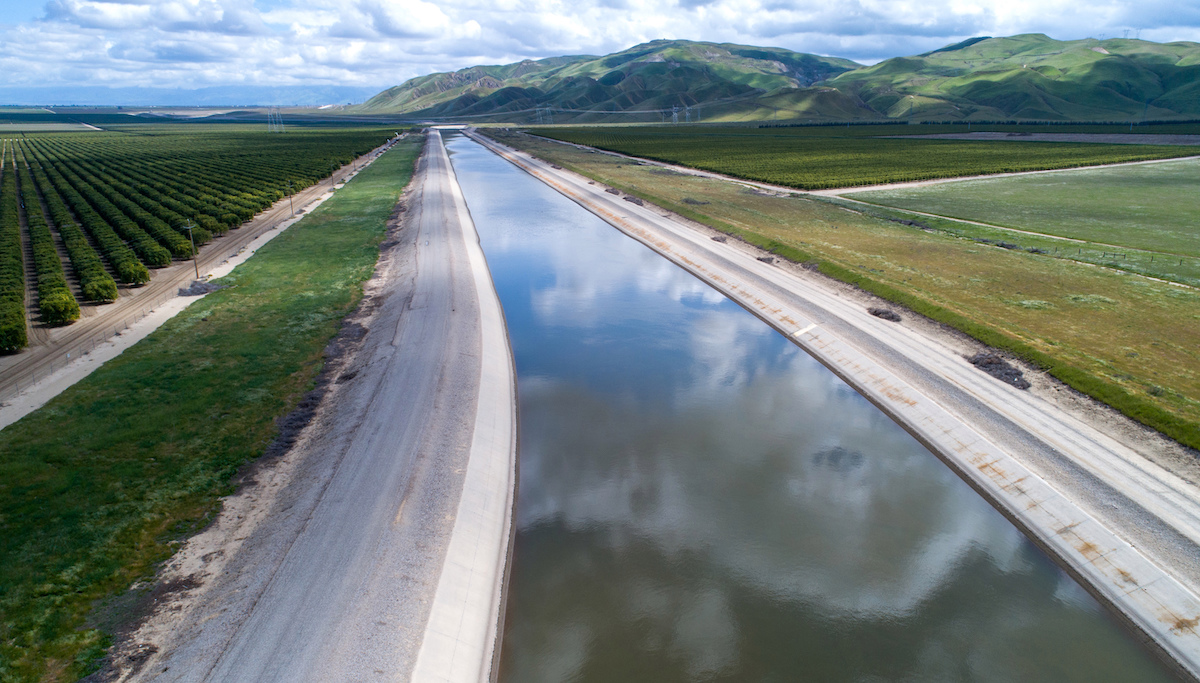The Board of Supervisors voted 4-1 on Tuesday to approve an extension of the county’s state water contract for 50 years, saying it would ultimately save ratepayers money.
“The ability to stretch costs over time is a real benefit,” said Supervisor Gregg Hart, who represents the Goleta Valley and western Santa Barbara.
Eight water agencies in Santa Barbara County, from the Carpinteria Valley to the City of Santa Maria, presently import water through the California Aqueduct. By 2035, their ratepayers will have paid off the $575 million construction debt for the pipeline that county voters approved in 1991 on the heels of a six-year drought. It extends from the aqueduct in Kern County to Lake Cachuma.
But reconstruction and maintenance of the aqueduct system itself costs the state Department of Water Resources $350 million per year, and those costs will inevitably continue past 2035, Ray Stokes, executive director of the Central Coast Water Authority (CCWA), representing the eight agencies, told the board. The share of those costs for Santa Barbara County ratepayers after 2035 will likely be only about one percent, Stokes said.
Board Chair Bob Nelson, who represents Lompoc and Orcutt, cast the sole vote against the 50-year extension.
Get the top stories in your inbox by signing up for our daily newsletter, Indy Today.
“It was not worth it to me to subject county taxpayers to that risk on their behalf,” he said after the hearing. “The county is the backstop for liability. What is the potential blank check that we’re giving the state?”
Carolee Krieger, a Montecito resident and the founder of the California Water Impact Network (C-WIN), a watchdog group, told the board that a contract extension would pave the way for the Department of Water Resources to impose billions of dollars in new debt for “unwanted infrastructure” on state water contractors — including the cost of a proposed $16 billion tunnel through the Sacramento-San Joaquin River Delta. C-WIN has sued the state to stop the contract extension.
Also, on Tuesday, the board postponed a decision on whether to allow temporary sales of surplus state water outside the county, pending further negotiations with the Central Coast Water Authority. Currently, the water can be leased but not sold outright. To date, with the exception of Santa Maria, the water agencies in this county have been buyers, not sellers of supplemental state water.
Supervisor Das Williams, who represents the South Coast from eastern Santa Barbara to Carpinteria, asked whether Santa Maria planned to sell water to developers in Nipomo, just across the county line, a move he suggested would increase urban sprawl and exacerbate the county’s jobs-housing imbalance.
Nelson said the city was required to sell water every year to Nipomo under a groundwater basin court settlement: Both communities share the same basin. Nipomo developers have approached the city in the past, looking to buy state water supplies, but no such deal has been made yet.
In an interview after the hearing, Nelson said that Santa Maria, the largest importer of state water in the county, has sometimes refused to supply water to new development in Orcutt unless the property is annexed to the city. If Santa Maria now wants something from the county, Nelson said, it should stop stifling growth in unincorporated areas.
“They’re happy for us to continue to be their bedroom community,” Nelson said. “I’d appreciate it if they were a better neighbor.”
At Tuesday’s hearing, Joshua Haggmark, the City of Santa Barbara’s acting Public Works director, told the board that his city wants the right to sell state water outside the county not for development, but to help other agencies replenish their depleted groundwater basins. The sales would be for 10-20 years at a stretch; if another drought came along during that time, the city could buy back some of that same water, Haggmark said.
The city and the Montecito Water District are jointly footing the $72 million bill for the desalination plant that the city built on its waterfront in 2017, toward the end of a seven-year drought. If the city wants to create a future supply of potable recycled water as well, Haggmark said, “We will need to reduce current water costs to make the leap.” Water managers, he said, “need to keep all options open and on the table … We want to do the best for our customers.”
Supervisors Williams and Joan Hartmann, who represents Isla Vista and the Santa Ynez Valley, said that if the county allows local agencies to sell state water outside the county, the proceeds should be earmarked for conservation and local supplies such as potable recycled water for residents here.
“Without that, I’m a ‘No, no way,” Williams said. “There are many examples of situations where it’s in the individual water district’s short-term interests to sell water, but I have never yet in 20 years seen that it is in the interest of the people of Santa Barbara County.”
Melinda Burns volunteers as a freelance journalist in Santa Barbara as a community service; she offers her news reports to multiple local publications, at the same time, for free.
Every day, the staff of the Santa Barbara Independent works hard to sort out truth from rumor and keep you informed of what’s happening across the entire Santa Barbara community. Now there’s a way to directly enable these efforts. Support the Independent by making a direct contribution or with a subscription to Indy+.




